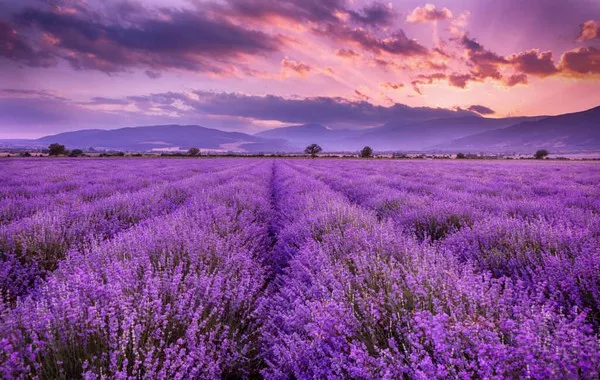The lavender flower (Lavandula) has long been admired for its captivating beauty, enticing fragrance, and numerous therapeutic properties. Beyond its physical attributes, lavender holds deep symbolic meanings that have been cherished by various cultures throughout history. In this article, we delve into the profound symbolism of the lavender flower, including historical significance, cultural associations, and its uses in art and literature.
1. The Lavender Flower: A Symbol of Serenity and Calm
One of the primary symbols attributed to the lavender flower is serenity and calmness. The soft hues of lavender evoke feelings of tranquility, making it a popular choice for relaxation aids and aromatherapy. For centuries, lavender has been associated with promoting restful sleep, reducing stress and anxiety, and easing emotional tensions. This symbol of peace has made lavender a cherished herb in ancient medicinal practices and a beloved addition to modern wellness rituals.
2. Spiritual Connections and Purification
In many spiritual traditions, the lavender flower is considered sacred and is associated with purification and protection. The ancient Romans used lavender in their bathhouses to cleanse the body and soul. Similarly, lavender was used in religious rituals by ancient Greeks and Egyptians for its perceived ability to cleanse and purify sacred spaces. Its potent aroma was believed to ward off evil spirits and negative energies, serving as an essential component in incense and spiritual ceremonies.
3. Love and Romance
Lavender’s significance extends to matters of the heart, symbolizing love, devotion, and affection. In the language of flowers, lavender often conveys messages of adoration and the promise of eternal love. Its sweet fragrance has been used for centuries as an aphrodisiac, symbolizing the intoxicating power of love. From medieval love potions to modern romantic gestures, lavender has played a central role in expressing feelings of passion and romance.
4. Healing and Protection
The lavender flower has a rich history of being associated with healing properties. In traditional medicine, lavender was used to treat various ailments, including headaches, insomnia, and digestive issues. Its antimicrobial properties made it an effective remedy for treating wounds and preventing infections. Additionally, lavender was often used as a protective herb, believed to ward off illness and provide a shield against negative energies.
5. Lavender in Art and Literature
Throughout art history, lavender has been a popular subject in paintings, sculptures, and literature. Renaissance artists featured lavender in their works as a symbol of purity and virtue. In literature, renowned authors have used lavender as a symbol of grace and elegance, linking its beauty to characters and settings. Lavender’s portrayal in art and literature has contributed to its enduring allure and cultural significance.
6. Cultural Associations of Lavender
Lavender’s symbolism varies across different cultures, showcasing its versatility and universal appeal. In Japan, lavender represents grace and femininity, while in the Middle East, it symbolizes devotion and the divine. Native American tribes incorporated lavender into their rituals, viewing it as a sacred herb for purification and spiritual protection. Understanding these diverse cultural associations enriches our appreciation of the lavender flower’s symbolism.
7. Lavender and the Language of Flowers
During the Victorian era, the language of flowers became a popular means of communication, allowing individuals to express sentiments and emotions through carefully chosen blooms. Lavender, with its multifaceted symbolism, held various meanings in this floral code. Depending on the context, it could signify love, devotion, distrust, or even a message of caution. Its interpretations in the language of flowers continue to captivate and intrigue enthusiasts today.
8. Lavender Festivals and Celebrations
Around the world, lavender’s symbolic importance is celebrated through festivals and events dedicated to this beloved flower. Lavender festivals are common in regions like Provence, France, and Sequim, Washington, USA, where vast lavender fields create breathtaking landscapes. These gatherings honor the flower’s beauty, fragrance, and cultural significance, providing visitors with a sensory experience that deepens their understanding of lavender’s symbolism.
Conclusion
The lavender flower’s symbolism is an intricate tapestry of serenity, spirituality, love, healing, and cultural connections. From ancient civilizations to modern times, lavender’s allure has endured, transcending geographical boundaries and cultural differences. Whether it is the gentle whisper of peace it conveys, the spiritual protection it offers, or the romantic undertones it exudes, the lavender flower continues to enchant and inspire, leaving an indelible mark on our collective consciousness.
As we unravel the meanings woven into the delicate petals of the lavender flower, we uncover a timeless and profound legacy, one that resonates with our deepest desires for tranquility, love, and spiritual growth. Embracing the symbolism of lavender allows us to connect with the essence of this exquisite bloom and appreciate its significance in the fabric of human history and culture.


